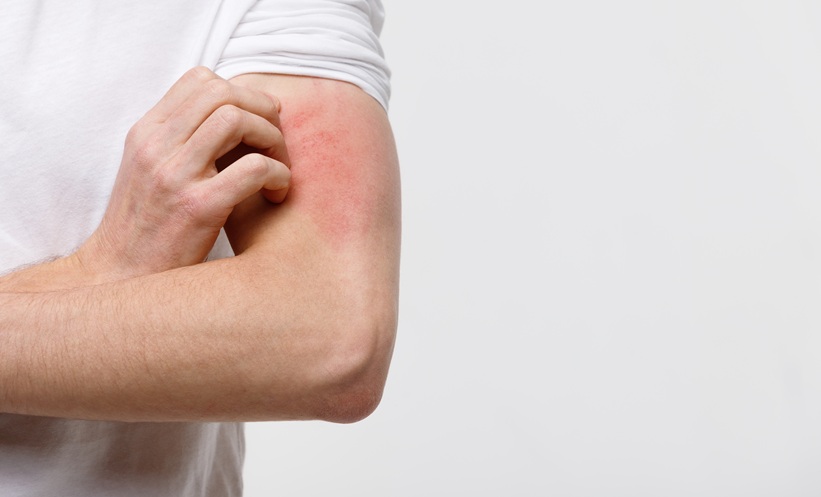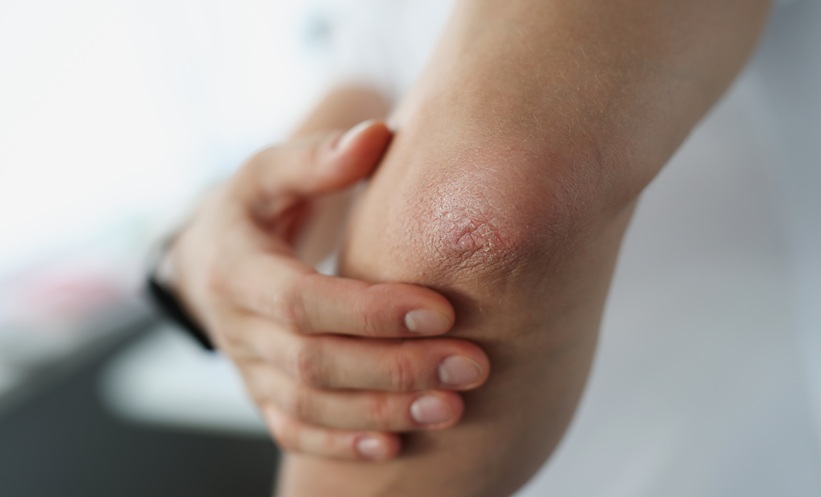Christopher Griffiths | Emeritus Professor of Dermatology, University of Manchester, UK; Adjunct Professor, King’s College London, UK; Consultant Dermatologist, King’s College Hospital, London, UK
Citation: EMJ Dermatol. 2023; DOI/10.33590/emjdermatol/10302429. https://doi.org/10.33590/emjdermatol/10302429.
![]()
What led you to pursue a career in dermatology? Was there a specific person or experience that was particularly influential?
There were actually two reasons. When I was about 4 years old, I was given a bird book by my parents and I memorised every bird in the book as a party trick. Not only did I become interested in birdwatching when I was very young, but I was also good at art. So, I had an artistic view of the world and I was good at pattern recognition. When I was in medical school, at St Thomas’s Hospital Medical School in London, UK, I went into my first dermatology clinic and I found this relatively straightforward. I was able to recognise the difference between psoriasis and eczema while my medical student colleagues were less assured. I am sure the ability to recognise patterns led me into dermatology and I then realised that this was going to be the specialty for me. I could also see that there were academic opportunities, as well as a nice mix of medicine and surgery. When people ask if I would do the same again, I say yes, I would go to medical school, do dermatology, and be an academic, which is, I believe, a pretty strong endorsement.
You have since published over 770 PubMed cited articles. What do you believe are the current gaps in dermatology research?
The big gaps in research are in inflammatory skin disease, which we are still looking to prevent or even cure. It is interesting that we can prevent and cure skin cancers and infections, but inflammatory skin disease (including acne), which affects a lot of people, cannot be prevented or cured yet. A cure needs to be found for these diseases, meaning that you can treat it, and stop treatment without the disease returning. It is not enough if one is still required to continue the medicine to keep the disease in remission; this is the same principle as other inflammatory diseases such as Crohn’s disease and rheumatoid arthritis.
You co-founded the International Psoriasis Council and have focused much of your research on this topic. What would you say are the most common misconceptions of this condition?
I do a lot of work around educating the general public about psoriasis, to encourage involvement and engagement, because the stress and psychological detriment that psoriasis causes people is often life ruining. Historically, people with psoriasis were viewed as having leprosy and they were stigmatised because of that. The first person to differentiate leprosy from psoriasis was a one of the founders of British dermatology, Robert Willan, in 1803. But here we are over 200 years on and people are still stigmatised because they have psoriasis. The general public view people with skin conditions as having something contagious, and I can relate many, many stories of people who have not been able to pursue the career they wanted because of this. They feel inhibited to interact with the general public because they are treated as though they have a contagious skin condition. They cannot go to the local swimming pool, they cannot wear a short sleeved shirt, shorts, or a skirt in summer. Thus, that is the biggest misconception, the stigma due to concern that it is contagious or that the person is not clean.
Are there any particularly promising advances within the field of psoriasis research that you see impacting practice in the near future?
I have been lucky enough to be involved with all the advances over the last 40 years, ever since working with Lionel Fry at Saint Mary’s Hospital in London, UK. When I started as a trainee dermatologist, I was part of the team that showed psoriasis to be an immune-mediated disease, which it was not thought to be until that time. We also performed one of the first studies to show that ciclosporin was highly effective for psoriasis, and that started the idea of targeting the immune system and components of the immune system for treatment of the disease. I beleive we set the groundwork for what then became the biologic targeted therapies for psoriasis many years later; we now have 11biologics of, and they have proven to be highly effective and remarkably safe. These treatments have transformed many people’s lives for the better -without a doubt the biggest change in dermatological practice I have seen. The number of people that have to be admitted to hospital with severe psoriasis has diminished hugely, and many dermatology departments do not actually need hospital beds anymore because of that.
The newer drugs under development for psoriasis are not new cytokine targets, they are just different ways of targeting the same cytokines such as IL-17, as well as the new small molecules that have recently been approved in Europe, and are taken orally rather than being injected. Deucravacitinib, which targets tyrosine kinase 2, looks very promising. Advanced therapeutics, particularly cell-based therapies, may help in managing or even curing these conditions.
Across all clinical disciplines there is a focus on personalised medicine. Do you think this is a possibility for conditions like psoriasis and eczema?
I have thought this for many years, which is why a group of us put together a successful application to the Medical Research Council (MRC) in the UK 12 years ago. It is an industry- academic collaboration called ‘PSORT (Psoriasis: Stratification to Optimise Relevant Therapy), it is very much based around a stratified, personalised approach, initially on biologics. We have made a lot of progress with clinical, genetic, and immune biomarkers, as well as an algorithm to predict and reproducibly stratify patients with psoriasis in their response to therapy. We do not have a biomarker yet, but we have a lot of data that could help create a more targeted rather than a trial and error approach to prescribing for this disease. I am a big fan of not just personalised medicine, but also so-called P4 medicine, which is personalised, predictive, preventive, and participatory. It is more of a holistic approach to getting people onto the right treatment for them. It is about the person rather than the disease.
In the recently published review you co-authored, entitled ‘Inflammaging and the skin’, what was the key message you were trying to deliver?
The other big area of research that I developed over the last 30 years is around skin aging. When I was at the University of Michigan, we published the first work to show that topical retinoids could repair photo-aged skin and we became interested in the underlying mechanisms of photo-aging, which is sun damage. That is what causes most of the features of aging, such as brown spots and wrinkles, rather than just an intrinsic chronological aging. We set up a big research programme to understand mechanisms behind aging, and helped develop the ‘No7’ range for Protect & Perfect, which changed the landscape as to how people think about the science that underpins skin aging therapy. As we move into the more difficult to study chronological and intrinsic aging, it seems there is an inflammatory infiltrate in aging skin, leading to the question of how we can prevent that inflammation. It is like a chicken or egg situation: is the inflammation a result of damage or is it actually contributing to the damage. I think it is probably contributory and one might by targeting this be able to reduce or slow down the aging process.
Can you talk more about the research with Boots and the publicity that followed?
It was a really surprising time actually, because they broadcast it on a Tuesday evening, on the BBC Horizon programme, and I was phoned up 2 days later by a journalist I know at The Times of London, who I talked to about psoriasis previously. She said she wanted to talk to me about the work I did with Boots. I asked why she wanted to do that, and she said: “You may not know this, but you are front-page news in the Daily Mail today, they’ve been reporting about people that are selling out this specific face cream.” I think 50,000 units of this specific face cream were selling a day, compared to what used to be 10,000 units a week. People were queuing around the block to get it, they were limiting the number of samples to three, and people were buying them to resell on eBay up to three times the price. They had to shut down and re-tool the whole production line, and 15 years on, it is still the number one seller in the UK.
What leadership skills did you gain during your role as President of the British Association of Dermatologists (BAD)?
I have been lucky enough to be president and chair of a few organisations. It is so important that people who go into those positions receive some training, which is why we set up the Future Leaders Academy for early career researchers in dermatology, across Europe. Then, 4 years ago, we set up a leadership and mentoring training course to give these people the tools they need to be effective leaders. I have three things to say about leadership, with the first one being the importance of being equitable. Everyone in the team, however junior, has something important to say, and you need to listen to what people tell you. Second, you need to be flexible, which is key and may hamper research if not recognised; some people are too fixed on a hypothesis, but it is important to be flexible and to seize opportunities when they come along. Third, a leader should be optimistic, because if the leader is not optimistic, you have a problem. You need someone who sees the big picture.
You have been awarded an OBE, you have chaired many international societies and councils, and have founded a skin care brand. To date what achievement are you most proud of?
Firstly, I am very proud of the work we have done with psoriasis over the years. From the very inception of immune-mediated drugs, to where we are now, it has been a privilege to be involved with that. In the last few years, I have also become very involved in global health, setting up skin clinics in refugee camps. After visiting dermatology departments in Myanmar about 4 years ago with my colleague Dr Su Lwin we felt that despite there being some talented dermatologists in Myanmar they did not have the resources to really make a difference. This motivated us to set up a charity – the Burma Skincare Initiative (BSI) – in 2019, which had made huge progress until Covid came along, and then a military coup in the country in February 2021. But despite the military coup, which has been catastrophically awful for the people in the country, we have been able to maintain our mission, which is promoting excellence of skincare for the people of Myanmar. It is when one does work like this, that one realises how lucky we are with the National Health Service (NHS) in the UK, which is often taken for granted.
Overall, what advice would you give to clinicians working with patients with psoriasis, specifically regarding how to improve their practice?
The advice I would give is to treat every patient as an individual with different requirements for treatment, which goes back to that personalised approach. It is the art of medicine, which tends to be forgotten. Patients do not just want someone who knows all the science; they want someone who has got their back, cares about them, and knows them.
Do you have anything to add?
Going back to the first question, I have always been fascinated by art and as I have gone around the world and talked to people, I noticed a lot of dermatologists are interested in art. I do not think the reasons I went into dermatology are unique, so we set up a course for our trainee dermatologists in Manchester few years ago. Working with the Salford Art Gallery, we employed an art historian to teach about art appreciation and visual literacy, how to look at a painting, and how to describe what you one observes. The trainees that registered on the six week course ended up being better diagnosticians. I along with two colleagues, Dr Helen Young and DrSarah Walsh, organise an annual course at the Tate Gallery and Courtauld Institute in London to teach European dermatologists how to look at a painting in the same way as looking at someone with a skin disease, and how to describe it.








